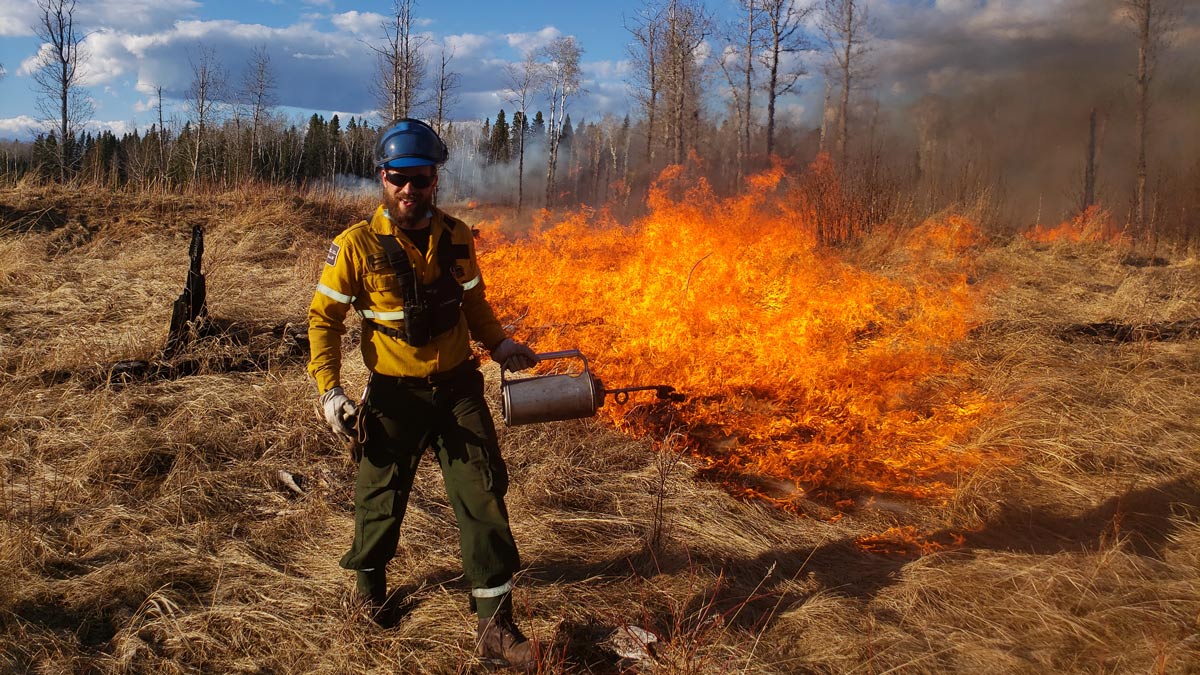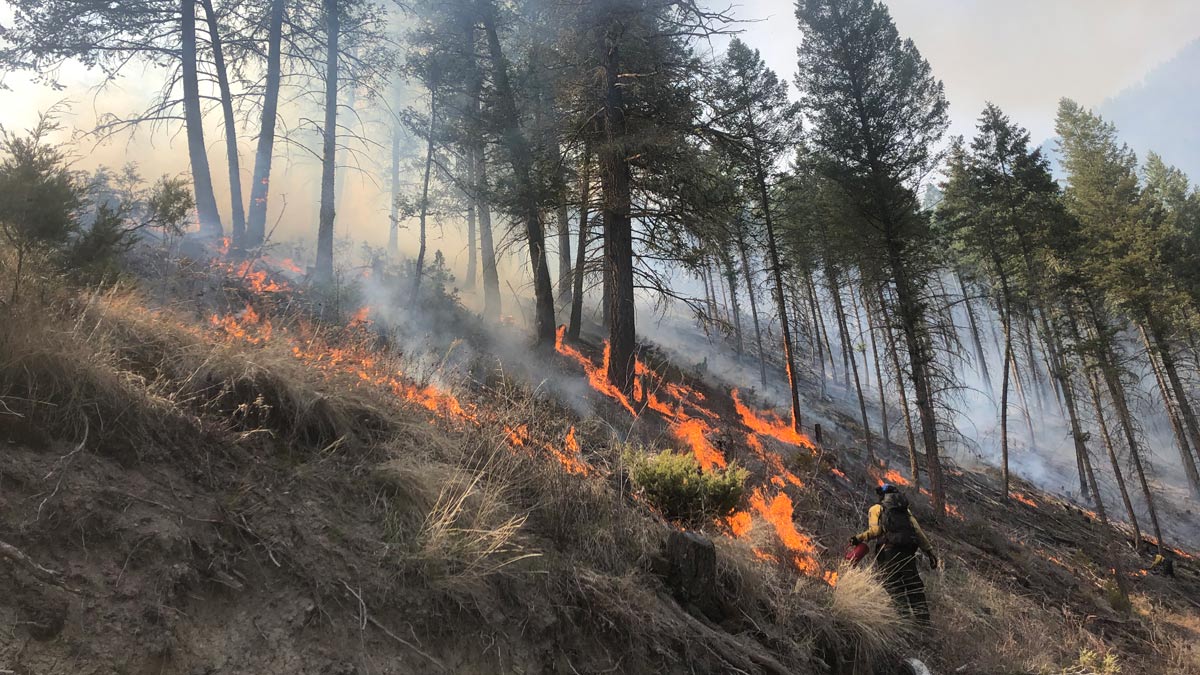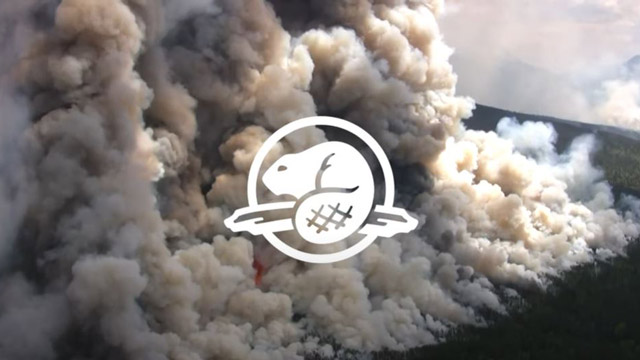
Prescribed fire
Prescribed fire is the planned use of fire to meet a set goal. Parks Canada uses prescribed fire to reduce wildfire risk and to restore and maintain ecological integrity across the country.
Fire is a renewer, a regenerator, and a component of a healthy ecosystem. Fire creates diversity in forests and grasslands and improves wildlife habitat in both the short and long-term. Prescribed fires are carefully planned in collaboration with specialists, partners, and stakeholders. Considerations for safety, air quality, species-at-risk, and visitor experience are always taken into account.
Fire and climate change
As our climate changes, fire seasons are predicted to become longer. Wildfires may become larger, and burn more severely. This is partly due to expected drought that will create dry, flammable conditions across much of the country. Reintroducing fire can create more diverse landscapes, and improve ecosystem’s ability to adapt to the changing climate. Prescribed fire and managed wildfires help accomplish this. Resilient landscapes mean that the forests, grasslands, and other ecosystems can recover and persist, even with the predicted impacts of climate change.
In 2024, Parks Canada’s prescribed fire program saw
1022
hectares burned
through
13
prescribed fires
in
7
different parks or sites
The planning process
Prescribed fire planning is a complex process. Each prescribed fire plan can take years to complete. Each prescribed fire plan undergoes a strict impact assessment. This impact assessment may involve input from Indigenous communities, stakeholders, land-use planners, cultural resource managers, wildlife ecologists, aquatic specialists, and more!
Each prescribed fire plan describes the exact conditions needed before ignition occurs. The prescription includes conditions, such as:
- wind speed
- fuel moisture
- drought code
- landscape topography
- barriers to fire spread
- stakeholder engagement
- resources needed before, during, and after the burn (including personnel)
- fuel type that is present (what you’re planning to burn and what is in the area)

Putting fire on the ground
Each prescribed fire plan is peer-reviewed by other fire management specialists within Parks Canada before being approved. Once approved, fire management specialists must wait for their “burn window” to arrive. The burn window can occur when all the conditions that are identified in the fire prescription are met.
The final authorization to ignite a prescribed fire comes from the National Fire Duty Officer and the Incident Commander. Using a checklist, they will confirm that all conditions identified in the prescription are met and that all resources are in place to ensure operations are conducted safely.
Only after all these steps are completed, the prescribed fire may proceed.

The monitoring stage
Immediately following a prescribed fire, fire management personnel monitor conditions closely. Depending on the location of the prescribed fire, monitoring may be done by:
- in-person observation
- remote cameras that send images via satellite to fire management personnel
- drone surveys
- flights over the area with thermal scanners
Long-term monitoring will also begin. Fire specialists will visit the burn site for many years following a prescribed fire to assess whether the long-term objectives of the burn have been met. Long-term objectives may include: habitat creation for wildlife, plant species restoration, and community protection.
Prescribed fire safety
The safety of the public, our crews, park infrastructure and neighbouring lands is always Parks Canada’s top priority. Parks Canada plans prescribed fires very carefully by taking into consideration the appropriate weather and fuel (vegetation) conditions to ensure the safety of the public.
All Parks Canada employees will have the necessary training and equipment to protect themselves and those around them in their work duties. In addition, fire specialists use existing landscape features, constructed fire guards, water delivery (sprinklers and helicopters) and ground crews to assist with containing the fire to pre-determined boundaries. Parks Canada also ensures that appropriate levels of personnel, aircraft and equipment are on site to ensure the safety of the operation.
Smoke management
Prescribed fire operations are only conducted under specific conditions, to ensure the least impact possible for communities and visitors. Ignition will only occur on days with good atmospheric venting conditions to disperse smoke.
While our goal is to ensure the best possible smoke dispersal, unpredicted weather changes can increase and redirect smoke from these fires.
Benefits of prescribed fires
Fire is a natural process and a crucial part of a healthy ecosystem. Through safe and effective fire management, Parks Canada is improving the ecological health for our forests and grasslands, while reducing the danger of wildfire to the public infrastructure and neighbouring lands.
By using prescribed fire to reduce the amount of fuel that has accumulated on the forest floor over the years, Parks Canada is ensuring that future wildfire will be less intense. The construction of fire breaks slows the spread of fires and makes them easier to control or extinguish. Burns have many ecological benefits as they release nutrients and open up forests, allowing for a mosaic of ecosystems that support a diversity of plants and wildlife.
Fire suppression during the 20th century has caused a significant decline in ecosystem health and species diversity across the country. Parks Canada is committed to restoring fire to the landscape, benefiting both communities and ecosystems.
Parks Canada recognizes that the last few years have been hard for wildfires in many parts of the country with many communities, businesses, and people impacted. Our thoughts are with all those that have been affected by wildfires.
The prescribed fires planned are an important part of a long term strategy to improve the ability of Parks Canada sites and communities to prepare for, and respond, to the risks posed by wildfire.
The prescribed fire reduce wildfire risk and contribute to protecting people, communities and infrastructure while also strengthening the resilience of landscapes to the negative effects of climate change.
Fire videos
Learn more about Parks Canada fire management with videos from national parks across the country.
